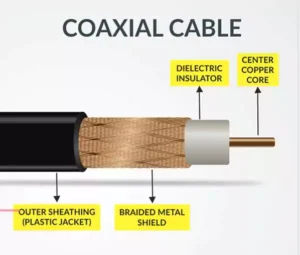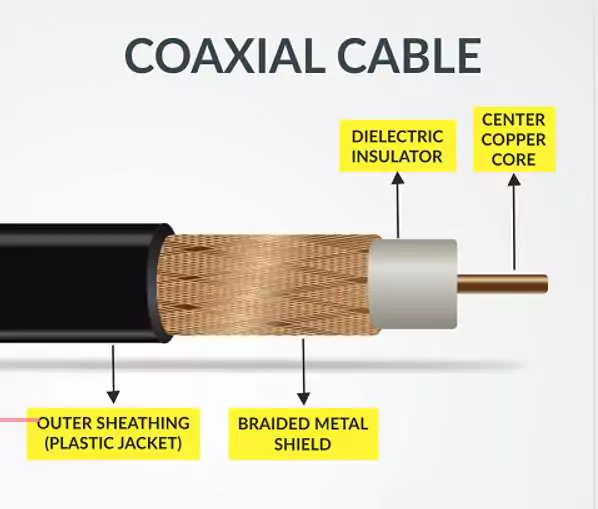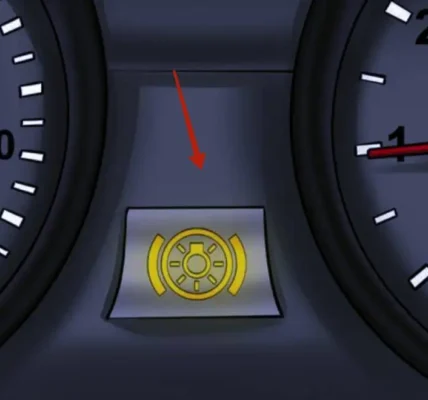Coaxial speaker cables are gaining popularity due to their easy setup and installation. These cables are known for transmitting sound seamlessly while maintaining high-quality and resisting external interference. They serve a versatile purpose, allowing control over various electronics like cable/satellite boxes, DVRs, HDTVs, Blu-ray/DVD players, audio systems, and game consoles.

The key advantage lies in their ability to transmit high-quality digital audio signals without interruptions. Typically, these speaker cables feature male RCA connections at both ends of the coaxial section. To understand the intricacies of coaxial speaker wires, it’s essential to delve into how they function, potential issues they may pose, and the various types of coaxial cables available.
In essence, coaxial speaker cables offer a user-friendly solution for audio transmission, ensuring a hassle-free experience in setting up and connecting electronic devices. Whether you are a tech enthusiast or a casual user, the seamless integration and high-quality sound transmission make coaxial speaker cables a reliable choice for enhancing your audio setup.
What is Coaxial Speaker Cable?
A coaxial speaker cable serves as a specialized electrical conduit, facilitating the transmission of radio frequency (RF) data between different audio components. This type of cable, commonly referred to as “coaxial speaker cable,” is gaining popularity for its ability to ensure consistent and high-quality sound in premium home audio systems.
The term “coaxial” in this context denotes the internal structure of the cable. It is named as such because the inner conductor, also known as the “core,” and the woven shielding, typically composed of copper, align along the same axis. This design is commonly employed in the construction of such cables.
With radio frequencies ranging from 20 kHz to 300 GHz, coaxial speaker cables provide an effective means of transmitting signals. These cables are often utilized to establish a connection between speakers and an amplifier. While there may be a slight risk of signal loss and distortion when connecting speakers to an amplifier via coaxial cable, it is generally minimal. It is crucial, however, to note that there is a remote possibility of damage to the amplifier and speakers in the system.
In essence, coaxial speaker cables play a vital role in enhancing audio fidelity, making them a preferred choice for audiophiles seeking a reliable and user-friendly solution for their high-end home audio setups.
Purpose of Coaxial Cable
Coaxial cables play a crucial role in modern wireless, telecommunication, and radio systems. Their versatility makes them indispensable in various applications such as HDTV, cable, internet, and audio/video transmission. Specific types, like the F-type lines and connections, are commonly used in cable TV, high-speed cable internet, and satellite TV transmissions. Notable variations include RG-6, RG-7, RG-11, and RG-60, each tailored for specific purposes. These cables form the backbone of seamless connectivity, ensuring a reliable and high-quality transmission of signals for our everyday entertainment and communication needs.
Components of Coaxial Speaker Cable
Coaxial lines are set up in the shape of a simple cylinder. Coaxial cables all have the same four parts, no matter how thick, bright, or well-made they are. This is always true, no matter how thick the wire is. Here are the four things that can change:
- Copper bases are common. This business uses copper stranding and steel that has been coated with copper.
- The centre conductor is kept safe by the dielectric. This could be made of solid plastic, foam, or air with gaps.
- Shields are made of copper twisted wire. The braid may be covered in silver. Copper braiding and aluminium foil make up the two shields of high-quality wires. Four shielding layers can be made out of two layers of metal foil and two layers of braided copper wire. Adding more shielding reduces losses and helps performance, but it also makes the cable heavier and less flexible, which is not ideal.
- Most jackets are made of PVC, which stands for polyvinyl chloride. The jacket could be made of a material that doesn’t catch fire, doesn’t get wet, doesn’t rust, or doesn’t break down in the sun.
How to hook up a set of speakers to a coaxial line?
- At the end of the wire, there are coax connectors. The cable tip, which is often made of metal, holds the right connection to the wire in place. Even though the coax connectors can be taken off without any extra tools, care must be taken to keep the wire from getting damaged. You should be fine as long as you have a steady hand and a sharp knife.
- When the connectors on a coaxial line are taken off, you should be able to see the wire inside. To connect it to a sound system’s speakers, you’ll need to bring the wires out into the open. You should look at how your speakers are wired now to figure out the right length of wire. You don’t want any exposed wires to be too short. We should use an extra foot of wire just to be sure.
- It doesn’t take much work to remove the insulation until you can see the copper wire. Because it is close to the conductor wire, the clear insulator on the bottom is less visible. To get to it, you will have to untwist some copper wire. Be careful not to damage the conductor wire below the coaxial line, or it will no longer work.
- After removing any extra shielding, all that’s left to do is connect the coaxial cable directly to the speakers. To do this, find the speaker’s positive connector (it will be red) and plug in the appropriate cable.
Advantages of Coaxial Speaker Cable
- Affordability without compromising on the product’s quality
- RFI or EMI wires are less likely to pick up noise or interference than twisted pair wires.
- support the sending of messages over a wide range of frequencies
- stronger tensile properties to work well in a wide range of settings
- Installation and growth options that are flexible
- The music quality is excellent and getting better, and it’s good enough for professional use.
Disadvantages of Coaxial Speaker Cable
- Construction with a lot of bulk
- There is a loss of signal while traveling across great distances.
- At the link, there is some loss of the signal.
- When there is heavy use, there is a change in speed.
- It is more expensive to install over longer distances because of the material’s increased thickness and rigidity.
- The process of running and concealing the speaker cord takes some time.
- When there is a greater capacitance, there is a greater chance of instability, particularly when using lengthy lines.
Types of Coaxial Speaker Cable
Flexible Coax:
Every flexible coaxial cable, which is also called the standard type of coaxial cable, has a conductor made of very small wires that are linked together. The braid gives the wire the right amount of flexibility. It does not protect you 100%, though. Because the rope has small holes, the RF waves can get through.
Coaxial Triaxial:
These cables, often referred to as Triax, have two visible wires surrounded by a layer of dielectric material. The first conductor manages the signal ground, and the second handles the earth ground. This design enhances signal protection against interference, making it less susceptible. Triax cables are known for their effectiveness in ensuring a stable and reliable signal transmission.
Semirigid Coax:
A semi-rigid coaxial cable features a sturdy, tube-like metal outer conductor that maintains a consistent characteristic impedance across its length. This construction ensures effective shielding, offering reliable performance throughout the system. However, this stability comes at the cost of flexibility. The cable’s robust design, resembling a pipe, provides a reliable barrier while sacrificing some adaptability.
Dual Coaxial:
These cables have two separate coaxial cables inside but they only have one outer jacket between them.
Conclusion
So, this page will provide you with all the information you require concerning coaxial speaker cables.



